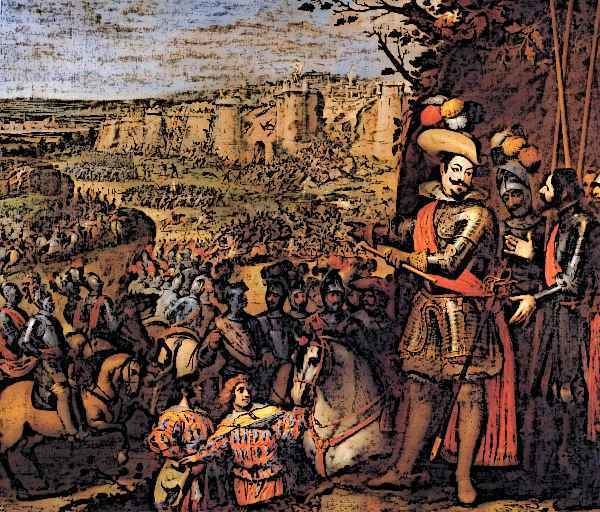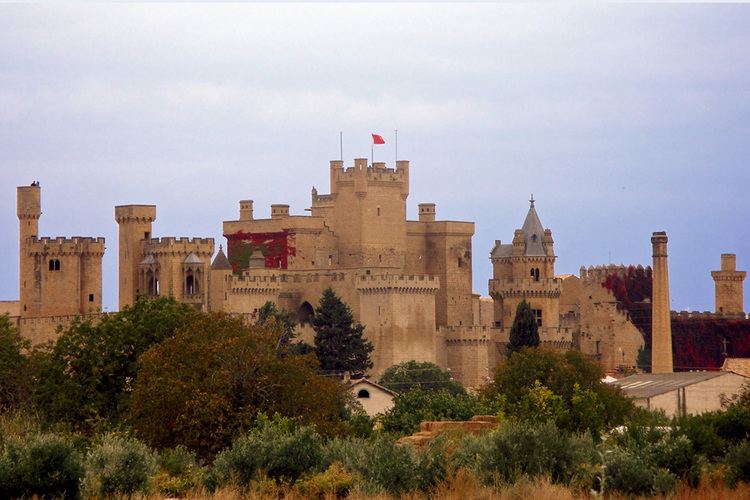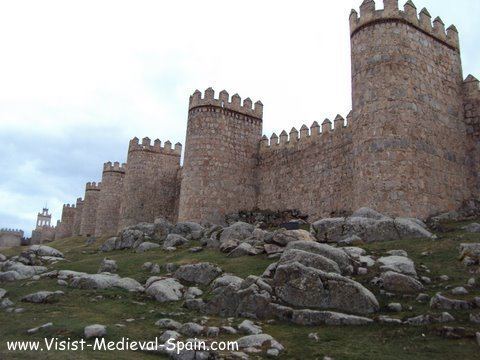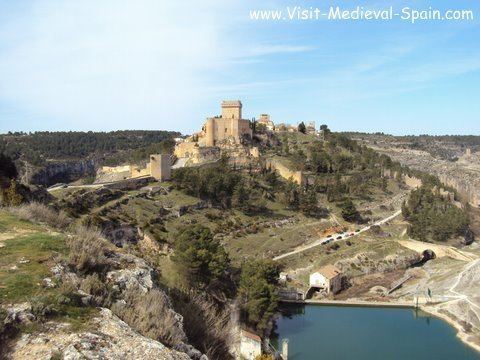 | ||
In many ways, the history of Spain is marked by waves of conquerors who brought their distinct cultures to the peninsula. After the passage of the Vandals and Alans down the Mediterranean coast of Hispania from 408, the history of medieval Spain begins with the Iberian kingdom of the Arianist Visigoths (507–711), who were converted to Catholicism with their king Reccared in 587. Visigothic culture in Spain can be seen as a phenomenon of Late Antiquity as much as part of the Age of Migrations.
Contents
- Early medieval Spain
- Medieval Islamic Spain
- Medieval Christian Spain
- Medieval Spanish culture
- Main Spanish cities in the Middle Ages
- References

From Northern Africa in 711, the Muslim Umayyad dynasty entered Europe and sparked a Muslim versus Christian war called the Reconquista, or the Reconquest (i.e.: The Christians "reconquering" their lands as a religious crusade). Their point of entry was the Strait of Gibraltar and the soldiers spread from modern day Portugal and Spain to southern France in approximately 10 years. The border between Muslim and Christian lands wavered southward through 700 years of war, which marked the peninsula as a militarily contended space. However, Christians lived in Muslim kingdoms and Muslims lived in Christian kingdoms in relative peace, but violence did break out, especially in relation to competition for resources. Jews also lived in China and Africa s. However, religion is separate from race; people from all faiths could and did convert to other faiths. Laws from each kingdom reflect how those in charge chose to interact with practitioners of the distinct religions. Every kingdom had distinct regulations and the three faiths enjoyed varying levels of citizenship. Constable translates one of these Regulations from Alfonso X's Siete Partidas, “Moreover, we forbid any Christian man or woman to invite a Jew or a Jewess, or to accept an invitation from them, to eat or drink together, or to drink any wine made by their hands.”. This regulation was to hinder interaction with those of other religion and to prohibit them from partaking in the kosher foods, as they are an important part of Judaism.

Early medieval Spain
Historical developments may be pursued by region:

Cultural developments can also be followed in the careers of the major Visigothic kings:
The broadest cultural divisions in Hispania during the medieval period are between Islamic and Christian societies.
Medieval Islamic Spain
For specific medieval Muslim dynasties, see:

Medieval Christian Spain

An organizing principle of medieval Spain was the Reconquista,the Crusade by which territories that had once been Christian and Visigothic were recaptured and Christianized. Rodrigo Diaz de Vivar was mythologized as the virtuous El Cid and is remembered as instrumental in this effort. For Medieval Northern (Christian) Spain see individual kingdoms and polities such as: Kingdom of Asturias, Kingdom of Galicia, Marca Hispanica, Kingdom of Aragon, Catalan counties, Principality of Catalonia, Kingdom of Pamplona/Navarre, Kingdom of León, Kingdom of Castile, Lordship of Biscay, Kingdom of Valencia, Kingdom of Majorca, Crown of Aragon or Crown of Castile.
Medieval Spanish culture
In the post-Roman period before 711, the history of the Spanish language began with Old Spanish; the other Latin-derived Hispanic languages with a considerable body of literature are Catalan (which had a relevant golden age of Valencian), and to a lesser degree Aragonese. Asturian Medieval Spanish, Galician and Basque languages were primarily oral.
Main Spanish cities in the Middle Ages
Medieval Spain was as much as a network of cities as it was interconnected provinces. Cities were cultural and administrative centers, the seats of bishops and sometimes kings, with markets and housing expanding from a central fortified stronghold. Medieval Spanish history can easily be followed through these major cities:
and at the great shrine of Santiago de Compostela.
